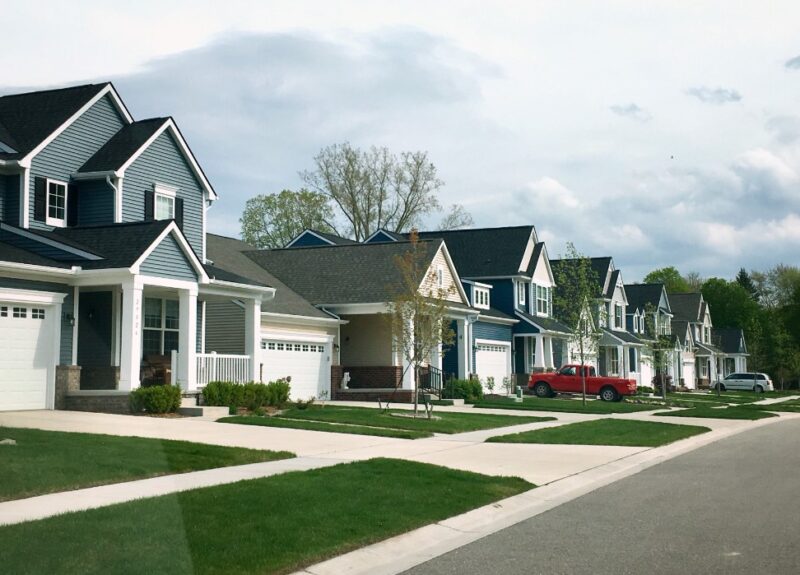As London continues to grow, the demand for new housing presents an opportunity to incorporate sustainable building practices. Constructing eco-friendly homes not only helps mitigate the environmental impact but also offers long-term benefits to homeowners, including reduced energy costs and improved living conditions.
This article delves into how sustainable building practices are shaping the future of residential construction in London, focusing on innovative techniques and materials that align with both environmental stewardship and modern urban development.
The Importance of Sustainable Building
Building sustainably in London isn’t just a trend; it’s a necessary shift to address urban environmental challenges. Sustainable homes reduce carbon footprints, lower energy consumption, and use materials that are kinder to the environment.
They also provide healthier living spaces that improve occupant well-being. By focusing on sustainability from the planning stage, developers can ensure that new homes are both environmentally responsible and economically viable, making green building practices a cornerstone of modern construction strategies.
Integrating Advanced Materials

For those constructing new homes in London, choosing the right materials is crucial for sustainability. Products from renowned brands like Fosroc are increasingly popular due to their commitment to environmental standards.
Fosroc’s range of construction solutions, including waterproofing and concrete repair products, ensure durability and longevity while maintaining an eco-friendly profile. By using advanced materials that offer enhanced performance and reduced environmental impact, builders can create structures that are sustainable not only in design but also in operation.
Energy Efficiency and Modern Technologies
One of the key elements of sustainable building is improving energy efficiency. This involves using modern technologies such as solar panels, smart thermostats, and energy-efficient windows. Implementing these technologies helps reduce the overall energy demand of homes in London, which is crucial in a city aiming to lower its greenhouse gas emissions.
Moreover, the integration of smart home technologies allows residents to monitor and control their energy usage more effectively, promoting sustainable living habits.
Water Conservation Strategies
Water is a precious resource, and its conservation is critical in sustainable building practices. London homes can incorporate rainwater harvesting systems to collect and reuse rainwater for gardening and flushing toilets.
Low-flow fixtures in bathrooms and kitchens also help reduce water use without compromising functionality. By prioritising water conservation, new homes can significantly decrease their environmental impact and contribute to a more sustainable urban environment.
Enhancing Indoor Environmental Quality

The quality of the indoor environment is essential for occupant health and well-being. Sustainable building practices focus on improving indoor air quality by using materials that emit low or no volatile organic compounds (VOCs).
Proper ventilation systems that filter outside air can also reduce pollutants and allergens inside the home. By creating a healthier indoor environment, sustainable homes not only promote the well-being of their residents but also support broader public health goals.
Utilizing Green Roof Systems
Green roofs are not just aesthetically pleasing; they offer multiple environmental benefits, making them an excellent choice for new homes in London. These systems provide natural insulation, reduce heat loss during winter, and keep buildings cooler in summer, thereby decreasing the need for artificial heating and cooling.
Additionally, green roofs can improve air quality and reduce the urban heat island effect, a common problem in metropolitan areas. They also manage stormwater effectively, reducing runoff and promoting biodiversity by creating habitats for wildlife.
Incorporating Sustainable Landscaping
Sustainable landscaping is another crucial aspect of building eco-friendly homes. It involves selecting native plants that require less water, fertilizer, and maintenance, significantly reducing the environmental impact of a home.
Additionally, strategic placement of trees and shrubs can provide natural windbreaks and shade, further reducing energy costs. Sustainable landscaping not only contributes to the ecological health of the area but also enhances the visual appeal and value of the property.
Emphasizing Durability and Longevity

Building homes that are designed to last is fundamental to sustainable construction. Using high-quality, durable materials can reduce the frequency of repairs and replacements, minimizing waste and the need for additional resources.
This approach not only conserves materials but also ensures that the home remains energy-efficient over its lifespan. Ensuring durability also means considering future climate conditions and potential natural disasters, making homes safer and more resilient.
Promoting Zero Waste During Construction
The construction phase of new homes often generates significant waste. Implementing a zero-waste strategy involves planning and executing construction projects in a way that minimizes waste through reuse and recycling.
Practices such as precise ordering of materials, reusing scraps, and recycling construction debris can drastically reduce the amount of waste sent to landfills. Adopting these practices not only supports environmental sustainability but also can lead to cost savings.
Community and Transport Integration
A sustainable building is also about its location and integration with community and transport networks. Constructing homes in areas with access to public transport, community services, and amenities encourages a reduction in car use, lowering carbon emissions.
Developing pedestrian-friendly spaces and cycling infrastructure can further enhance the liveability and sustainability of the area, promoting a healthier, more active lifestyle among residents.

Conclusion
Constructing new homes in London with sustainability in mind is not just beneficial for the environment but also for the homeowners and the community at large. It involves a holistic approach that includes the use of advanced, eco-friendly materials, energy-efficient technologies, water conservation measures, and much more.
Sustainable building practices enhance the resilience of homes, improve the quality of life for residents, and contribute to the broader goal of environmental preservation.
As London continues to evolve, embracing these practices will be essential for developing a sustainable urban future that meets the needs of both the planet and its people. By prioritizing sustainability, London’s new homes can serve as a model of modern, environmentally responsible living.


